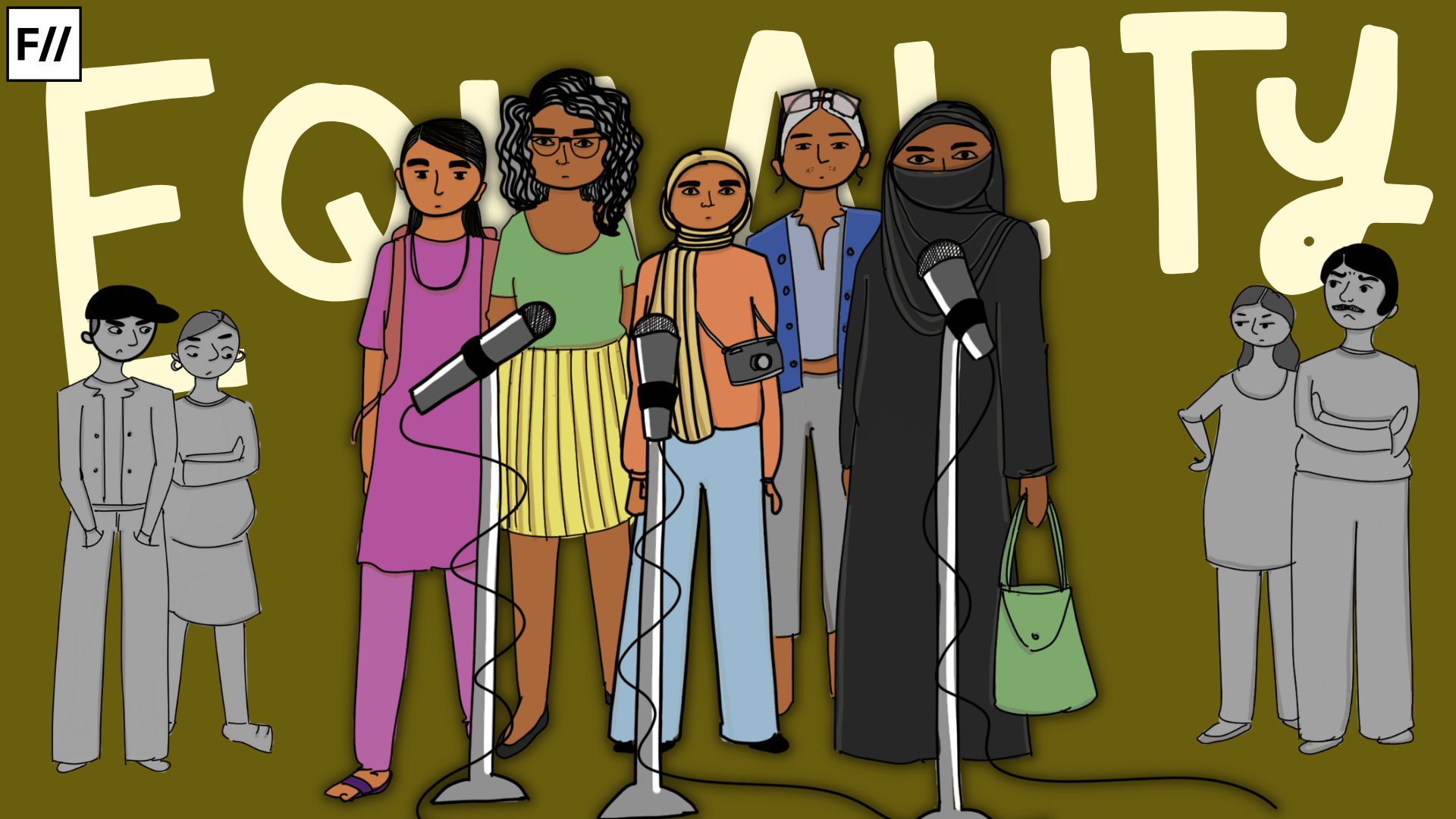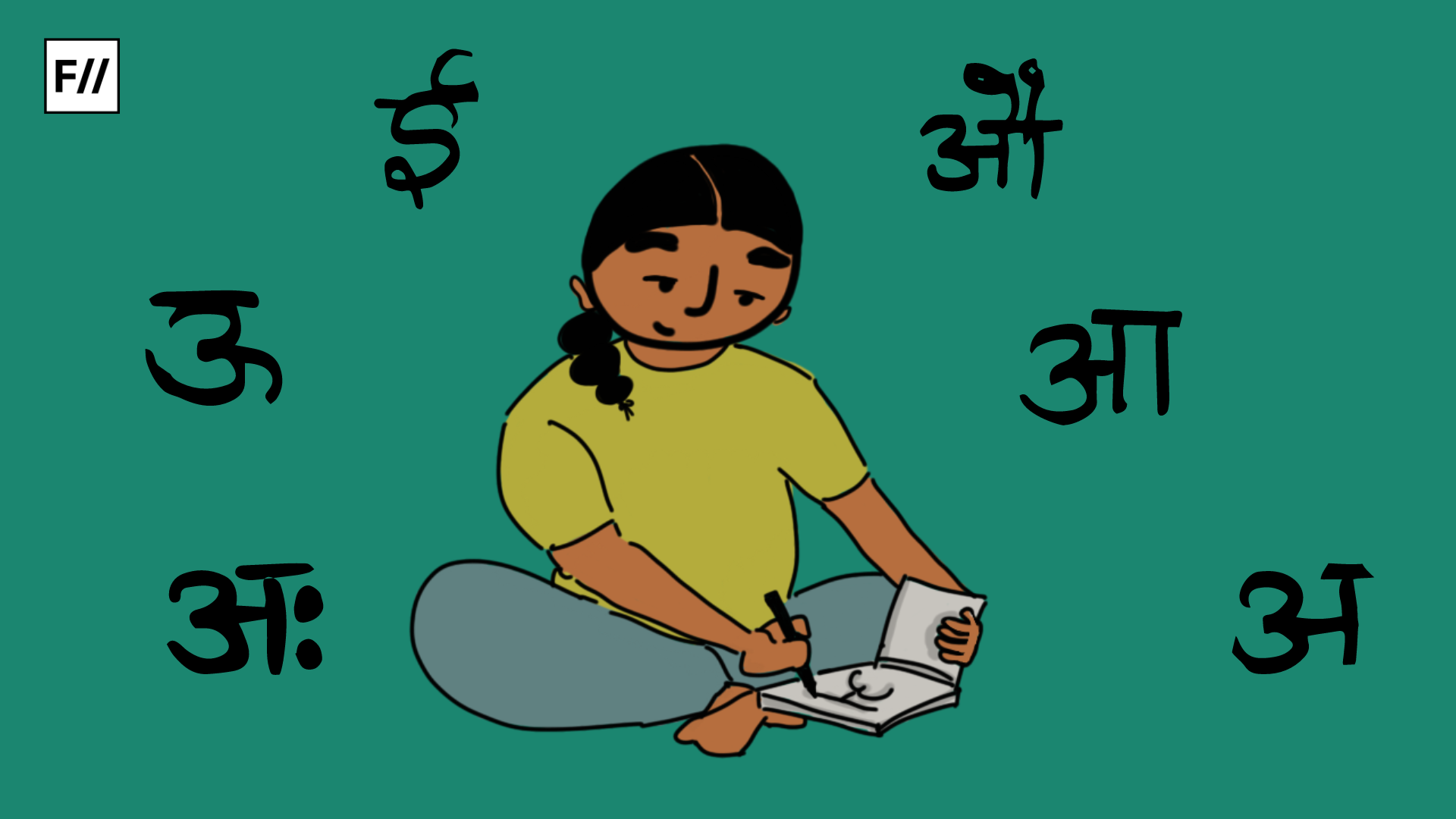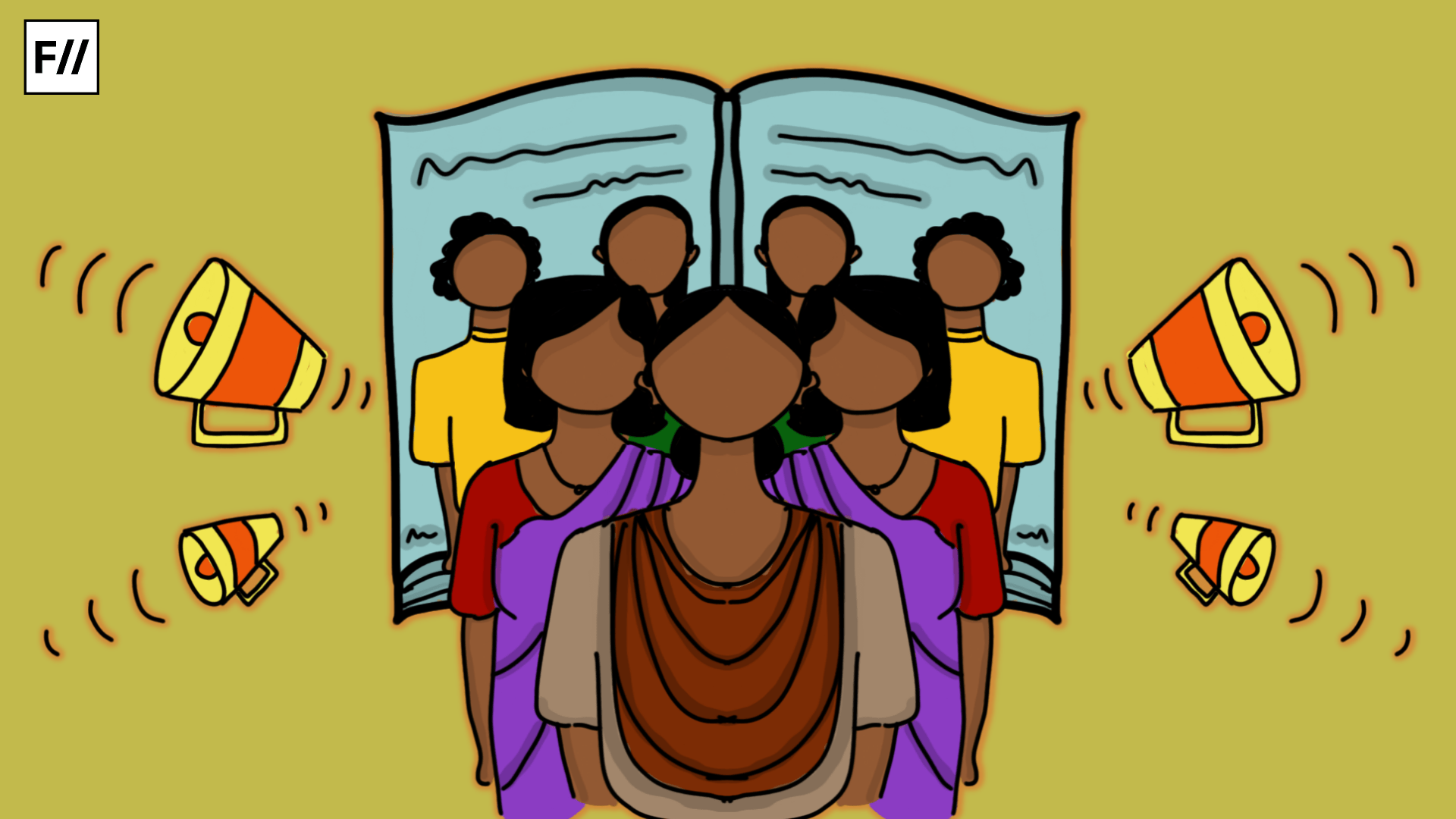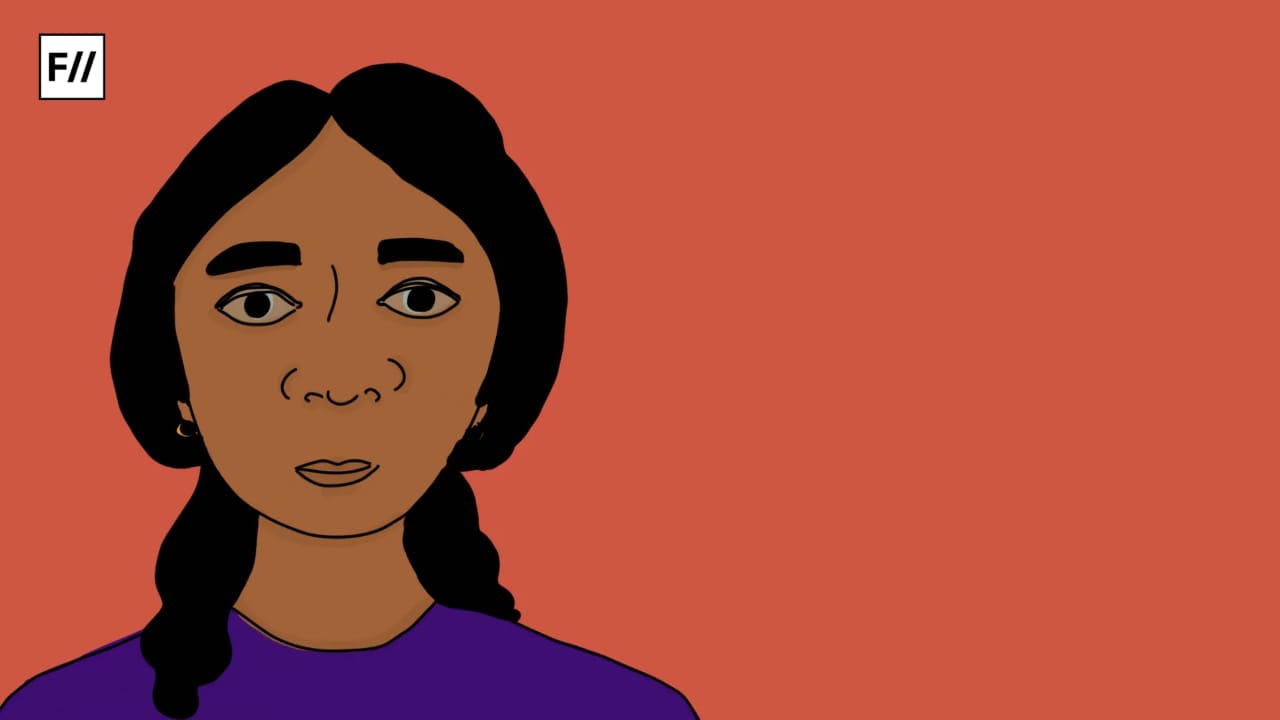On July 2nd, 2024, the popular women’s media platform, ‘Women’s Web‘ announced that they were closing down, because they ‘have decided that it is time for (them) to explore new avenues and challenges‘. One of the first women-centric media platforms, Women’s Web started as a ‘as a blog from one woman’s desk along with a few like-minded souls‘ and has published over 20,000 stories in the last 14 years, empowering ‘countless women with the ideas, community and resources to chase their dreams‘ and employing ‘hundreds of women in core and project-based roles‘, thereby creating one of India’s first women led community.
The closure of Women’s Web comes in a long line of similar media shutdowns, in the recent past.
The closure of Women’s Web comes in a long line of similar media shutdowns in the recent past. ‘Feministing’, a US-based feminist blog which had 1.2 million unique monthly visitors during its heyday, making it one of the most widely-read feminist publications of its era, closed down after 15 long years of cyber feminist activism in 2019. Similarly, US-based media platform ‘Bitch Media’, which was one of the first to publish ‘feminist pop culture critique’, closed down in April 2022 after 25 years. In the same month, the feminist blog ‘Wear Your Voice‘ also announced closure after 12 years of online activism and community building. ‘Everyday Feminism’, a feminist blog featuring ‘intersectional feminism for your everyday life’, has also been inactive since 2019. In their farewell post dated August 1, 2023, ‘Feminist Frequency‘ cited ‘exhaustion’ and ‘burnout’ as a feminist nonprofit as the reason for their closure.
One of the first explicitly trans inclusive feminist media organisations, the UK-based ‘The F Word’, closed down in August 2022. In 2023, UK-based ‘Gal-dem‘ ceased to exist, posting a goodbye note citing ‘difficulties…faced in stabilising (their) position both financially and structurally‘ as a reason for their closure.
In a post-pandemic world of budget cuts and low funding, sustaining a feminist or social justice-focused media platform becomes a great balancing act, difficult both emotionally and financially. Along with the recent trend of feminist media houses shutting operations, it is also noticeable that a large number of these media organisations are getting acquired by larger news media platforms. From Jezebel getting acquired by Paste Magazine, The Lily becoming a part of The Washington Post, to Broadly joining Vice, it is increasingly apparent that independent feminist media organisations have a hard time surviving on their own.
Feminist media houses in India and the struggle to exist
The second wave of the feminist movement of seventies’ America, led by figures like Betty Friedan, Gloria Steinem, Germaine Greer and others, came to India by the 1980s. As Indian women marched into social, cultural, professional and sexual liberation, several women’s rights organisations were founded, some of which published feminist writing and could be considered as the foremothers of present-day feminist media organisations.
Kali for Women, founded by feminist stalwarts Urvashi Butalia and Ritu Menon, was a literary publication dedicated to women and gender issues which has published some seminal texts.
Manushi, a journal on gender activism and women’s issues, founded by Madhu Kishwar and Ruth Vanita in 1978, was the first feminist political magazine to emerge after the Emergency period in India. Post liberalisation, many more such publications became popular in an India that was becoming increasingly aware and a part of the global feminist solidarity.
After the internet revolution, cyberspace became rife with feminist media organisations, and it was cyberfeminism which brought about the third wave of the feminist movement. However, the digital space is a microcosm of the real world and the patriarchal structures of this world mirror itself online where the rise of right-wing misogynistic cesspools on websites like Reddit and 4chan gave rise to what is popularly known as the “manosphere” in Internet lingo, a section of the Internet that is proving to be harmful to the health and sustenance of free feminist media and thought, becoming one of the reasons feminist media organisations are compelled to close operations on falling prey to sexist hate and vitriol online.
This is a global phenomenon- in India, too, several feminist and intersectional media organisations have stopped functioning. The shutdown of ‘Women’s Web’, which has recently ceased operations with a goodbye note on their website, comes in a series of similar shutdowns. The Ladies’ Finger, a prominent feminist media organisation based in India, has not posted since 2019. The iconic video platform Vitamin Stree posted on LinkedIn in 2023, saying they were ‘taking a big, fat break from the internet.‘
Questioning power and the threats that come with it
The recent shutdowns of feminist media organisations worldwide are not random, isolated events—they are symptomatic of a larger issue that plagues contemporary society and our interactions with and consumption of content. In the past decade, the rightward shift in global politics has not only affected our rights and the freedom to practise them, but also our regular lifestyle, including dictating the kind of content we can or cannot consume.
Progressive feminist media is often critical of power and holds those in power accountable, which then becomes a concern for right-wing governments. The BJP-led Indian government has historically attempted to stifle dissent in every form, targeting critical journalists and rights-based organisations like NewsClick, Amnesty International, etc. In October 2023, Prabir Purkayastha, the Editor of NewsClick, was arrested under the UAPA sedition law for allegedly utilising Chinese funding to promote ‘anti-national propaganda‘ in India. Even though the arrest was ruled invalid later by the Supreme Court, Purkayastha was incarcerated for six months, sending a chilling message to journalists and media organisations. In November 2019, the Bengaluru and New Delhi offices of rights-based organisation Amnesty India were raided by the CBI for allegedly breaching foreign funding laws after they spoke out against the current government.
Progressive feminist media is often critical of power and holds those in power accountable, which then becomes a concern for right wing governments.
In an atmosphere heavy with the threat of sedition laws, it is indeed difficult for feminist social justice organisations to question laws, policies and the powerful.
Japleen Pasricha, the founder of Feminism in India, shares, “When I first started the organisation, the first question I had to sort out was whether FII would be an NGO or a for-profit media company. My biggest learning has been that for the kind of work that we do, speaking for religious minorities and questioning political power, it is difficult to function as an NGO, as there are many government compliances. The FCRA law also makes it difficult to get foreign funding. Therefore, even though it was difficult to make FII a business organisation, it was a decision taken keeping censorship and harassment by political parties in mind. And even though being a private limited company comes with its challenges, it is still better for us, as a political website.“
“But now, when there is always a fear of censorship or of being arrested, especially when you see so many other journalists being arrested, for the work that they do, a form of self-censorship does creep through in the kind of content that we publish,” she says.

The constant government surveillance and scrutiny by right-wing elements can lead to feminist media houses being hounded and trolled mercilessly for dissenting views. Feminist organisations might also choose to self-censor to avoid the wrath of the government and their accessory right-wing outfits.
Feminist media organisations battling the rise of the manosphere
The rise of the manosphere, replete with incels who spew vile hatred towards women/queer-led organisations with a feminist worldview, is another deterrent for feminist media platforms. As young men of the newer generation turn more towards misogyny, what with the influence of people like Andrew Tate and Ben Shapiro, it becomes incredibly difficult to share feminist opinions and statements on social media without fear of mass backlash and vitriolic hate. In such a scenario, dealing with trolling and cyberbullying daily becomes increasingly mentally and emotionally taxing for the people behind the organisation.
Funding to sustain operations, or the lack thereof
Usually, feminist media organisations are born out of a need to educate netizens about the values of intersectional feminism and gender justice, rather than a profit-making project. However, to sustain the operations behind a feminist media platform, it is necessary to have proper and adequate funding. Often, this funding is acquired through partnerships with like-minded or not-so-like-minded organisations. Sometimes, collaborations with the latter kind of organisations lead to a compromise in the feminist value of a media platform.
Another mode of sustenance for feminist media organisations is grants and fellowships, which are in turn, competitive and difficult to acquire. Moreover, these grants usually are one-time payments which require organisations to apply to multiple such opportunities to sustain operations.
The Foreign Contribution Regulation Act in India (FCRA) levies several strict rules for foreign funding to Indian organisations. While only non-profits are eligible for foreign funding, a 20% cap is imposed on administrative expenses drawn from foreign funding. According to the law, “No person, resident in India, and no citizen of India resident outside India, shall accept any foreign contribution, or acquire or agree to acquire any currency from a foreign source, on behalf of any political party, or…person.”
This stringent law, although important for national security, makes it incredibly difficult for independent media organisations to accept foreign grants, thereby making the sustenance of these organisations increasingly difficult.
While donations depend completely on the goodwill of the viewers, subscriptions, especially pay walls make it hard for certain people to access content.
Feminist organisations often rely on subscriptions and donations to sustain their work. While donations depend completely on the goodwill of the viewers, subscriptions, especially paywalls, make it hard for certain people to access content. Moreover, most people who follow these media organisations and are avid readers of their content happen to be young students and researchers who might not have the disposable income to subscribe to multiple media platforms. This is a point of contention for most feminist media organisations, which believe that knowledge should be free and accessible for all.
The labour of running a feminist organisation
The emotional labour associated with running a feminist page, media platform or organisation is immense. As most of these platforms are led by women and queer people, the labour and emotional investment is gendered, with marginalised genders putting in their time and effort in “educating” people about intersectional feminism and trying (often, in vain) to transform their regressive views to be more inclusive and open-minded.

From dealing with misogynistic trolls, to carefully handling stories that are critical of the government to not be labelled “seditious” to actively looking for funding and budgeting for the organisation, especially in a post pandemic world in the throes of recession, where projects are essentially utilitarian and importance is only given to work which has immediate and quantifiable results, running a feminist media organisation takes a mental toll on the people behind it.
“Our biggest challenge is that our place in the ecosystem places expectations around impact on us that are entrenched in the thought patterns of the non-profit world, perhaps because the imaginations of our work are only to be found in that world. Whereas we’re grappling with trying to run and sustain a feminist business, shape an alternate model. Also, our unique diversity – our team of women from diverse backgrounds – is a tough challenge; it is also our biggest strength, a double-edged sword,” say Kavita, Priya and Pooja from Khabar Lahariya, on the challenges they face running a feminist news startup for a rural audience.
“Sustaining operations as a gender based news media organisation isn’t easy in today’s landscape. Sources of funding are few, and therefore, at BehanBox, we have a diversified revenue stream. We get project-based funding from clients, and the alignment with clients is a balancing act. We are also trying to experiment with reader-funded and membership driven models of revenue,” says Bhanupriya Rao of BehanBox, “Since the results of the kind of work we do are not immediate and we are more focused on educating, building awareness and generating evidence for social issues, which have long term effects that are difficult to quantify, funding is often hard to procure.”
Sakshi Juneja from Gaysi outlines the unique challenges the organisation faces as a queer cultural media organisation, stating how investments are twice as much in this age of social media, where media organisations and blogs have to work on both their social media and website.
“It requires resources, ideation, research and funds to work on social media as well as our website,” says Sakshi.
Sakshi also points to the added investments Gaysi makes in the skill-building of their team of creators and employees.
“Queer sensibilities are not majorly taught in most schools and universities or other workplaces, and therefore we have to train new team members to develop these skills,” Sakshi says.
As Gaysi is a for profit organisation, Sakshi describes how sometimes, it becomes challenging to align their queer sensibilities and ethos with their clients and collaborators.
As Gaysi is a for-profit organisation, Sakshi describes how sometimes, it becomes challenging to align their queer sensibilities and ethos with their clients and collaborators.
“We must balance our politics as a queer popular culture-based organisation with the brand language of our collaborators, which can sometimes be difficult,” Sakshi says.
The importance of feminist media organisations today
But what makes it all worth it, after all?
“At FII, we receive a lot of trolling and harassment. I have been doxxed, my home address and my personal details have been put up on social media. Some of the other team members have also faced similar harassment and trolling because we work on and talk about political issues, like communalism, religious freedoms and the importance of secularism in our country. It can be extremely detrimental to our mental health and the kind of work we’re doing,” says Japleen Pasricha.
“But recently, when we did a survey with our community for our 10th anniversary, so many readers came back to us and said why they love FII. It was really heartwarming. Also, the awards that we receive and the recognition that we receive from domestic, as well as international organisations, some of which are our partners, make me very happy to see where we’ve reached today,” she adds.
A feminist media organisation in the present-day social scenario is of utmost educational importance. Not only do these organisations educate people about social justice issues, but they also help build strong communities of feminists, writers, thinkers and activists. In their farewell note, Women’s Web talks about the importance of feminist community building and how they had ‘inspired many others to build communities of a similar nature, all enabling women (and other underrepresented groups) in their own ways.‘
“To create the Feminism in India community, I initially asked a few feminist bloggers to publish at one place, to have a platform where like-minded individuals can talk and share about their issues,” says Japleen.

“In the last 10 years, we have created a vibrant feminist community, and multiple people have reached out to us and told us how much they value this community and find our articles inspiring. They have used them for research purposes for their studies, to educate themselves about gender justice and to initiate conversations on difficult topics. I remember when we launched the Hindi website, one of our long-time readers wrote back to us and said that she really appreciated the fact that we launched in Hindi because she was able to send some content to her parents. The discourse around feminism is mainly in the English language, so creating this feminist community in India, not just in English, but also in the Hindi language, has opened up the doors for semi-urban and rural young women to talk about feminism in their language and their cultural context,” she says.
Feminist organisations are also instrumental in campaigning for policy change and progressive lawmaking.
Feminist organisations are also instrumental in campaigning for policy change and progressive lawmaking. Through relentless activism and petitions, feminist platforms can propel progressive social change in a society, otherwise plagued by right-wing misogyny and hatred towards the marginalised.
At this juncture in time, the odds are stacked against such organisations. As it becomes increasingly difficult for feminist media platforms to continue working towards a cherished cause, it must be remembered that a clear feminist voice that prioritises intersectionality and human rights is the need of the hour. Creating a safe space for such diverse feminist voices can only be possible through the activism of feminist media organisations in order to achieve gender equity and a more inclusive, egalitarian world. Until then, we must do what we, as feminists, have always been doing: speaking up over the din of patriarchy and making ourselves heard.
About the author(s)
Ananya Ray has completed her Masters in English from Jadavpur University, Kolkata, India. A published poet, intersectional activist and academic author, she has a keen interest in gender, politics and Postcolonialism.





